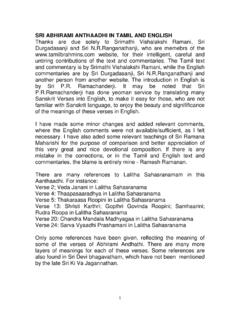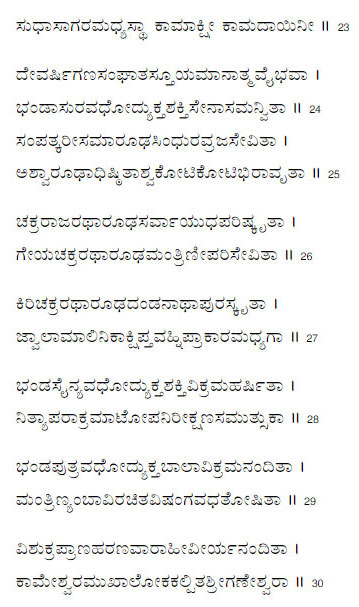

Thus in the first five namas, the primary qualities of the Brahman have been explained, though not explicitly. Vak Devis conveyed through namas 4 and 5, the other two aspects of the Brahman, annihilation and recreation. “The first nama of this sahasranamam started with creation by addressing Lalitābikā as Śrī Mātā, the next nama discussed about sustenance and the third nama subtly conveyed the act of dissolution. This Sahasranamam dwells more on the kinetic aspect of the Brahman rather than the witnessing aspect of the static Brahman, though both happen contemporaneously.” In order to understand the Brahman, more has been said about His kinetic aspect rather than the static aspect. It is easier to say that the Brahman is without form, but the conceptualisation becomes difficult.

If someone claims to know the Brahman thoroughly, he has to be dismissed as the Brahman is beyond comprehension by normal human mind. Though the Brahman is One, He has been demoed as two, merely to understand Him to the best possible level. She was described as saguna Brahman (Brahman with attributes) and nirguna Brahman (Brahman without attributes with eternal purity).

Every one of this meaning perfectly fits Her nature and form. Lalitā means sported, played, playing, wanton, amorous, innocent, soft, gentle, charming, lovely, wished for, desired, quivering. All along She was known to us as the Supreme Mother who was portrayed through Her gross and subtle qualities. Her name is disclosed by Vak Devis only in the last nama.


 0 kommentar(er)
0 kommentar(er)
